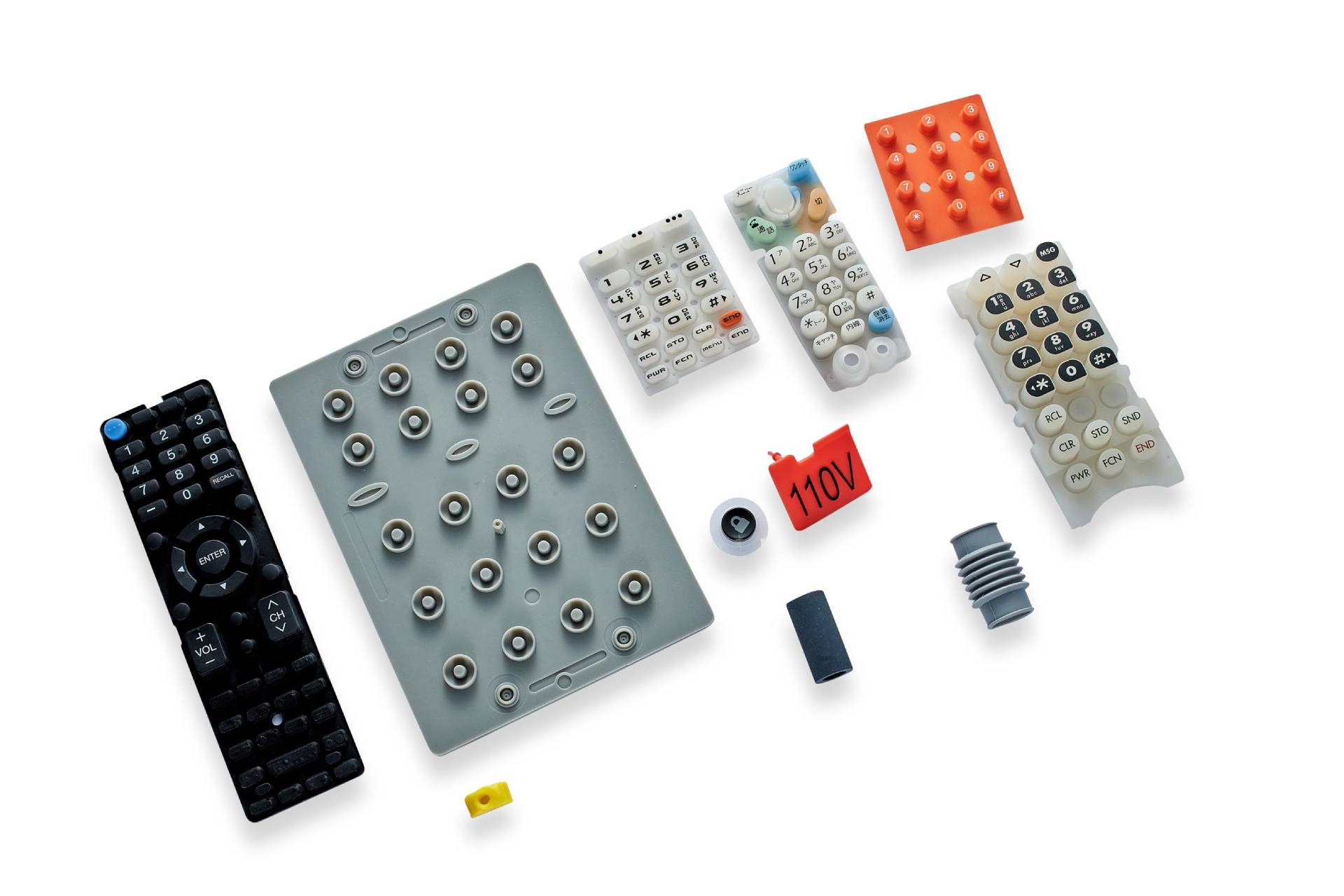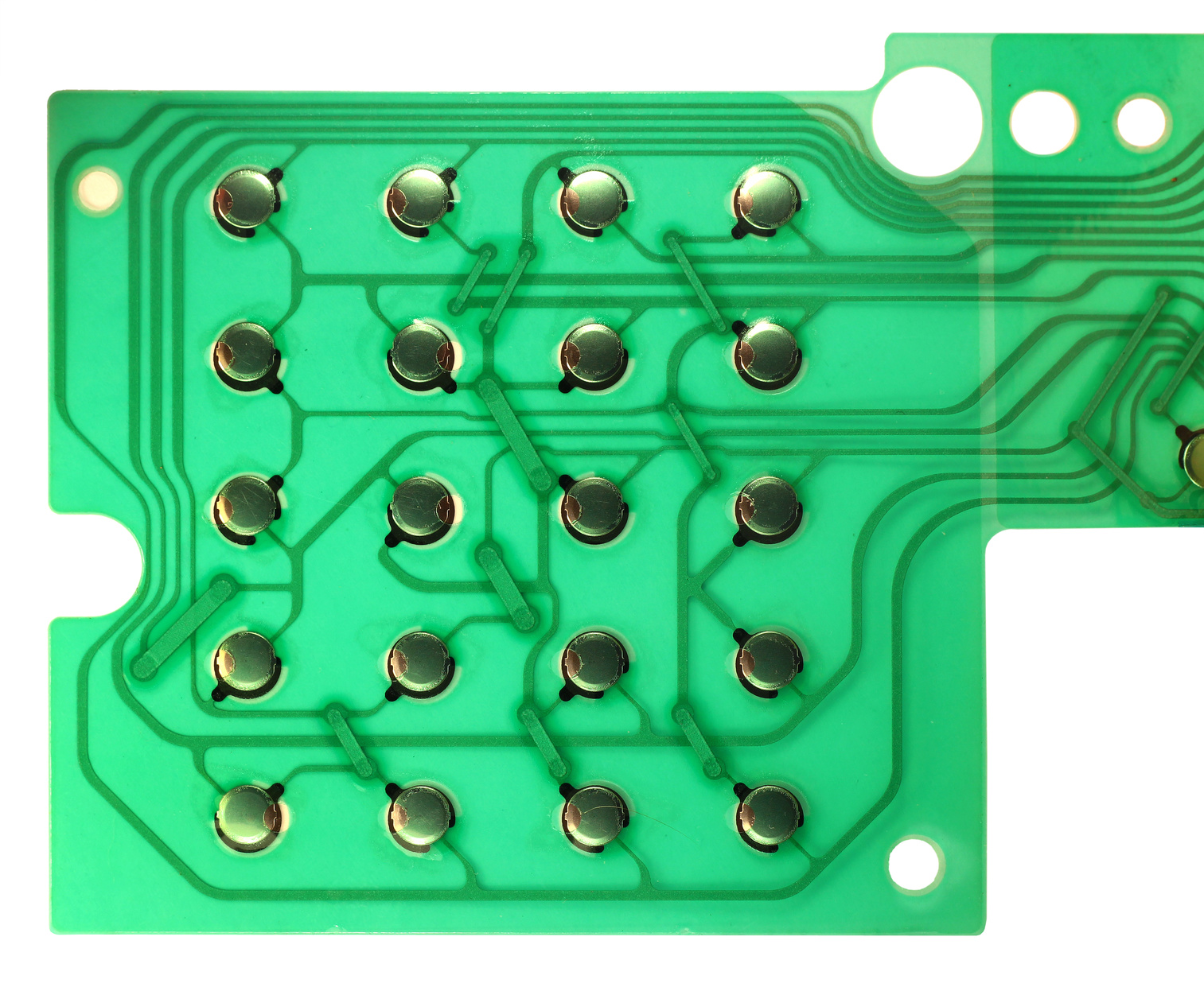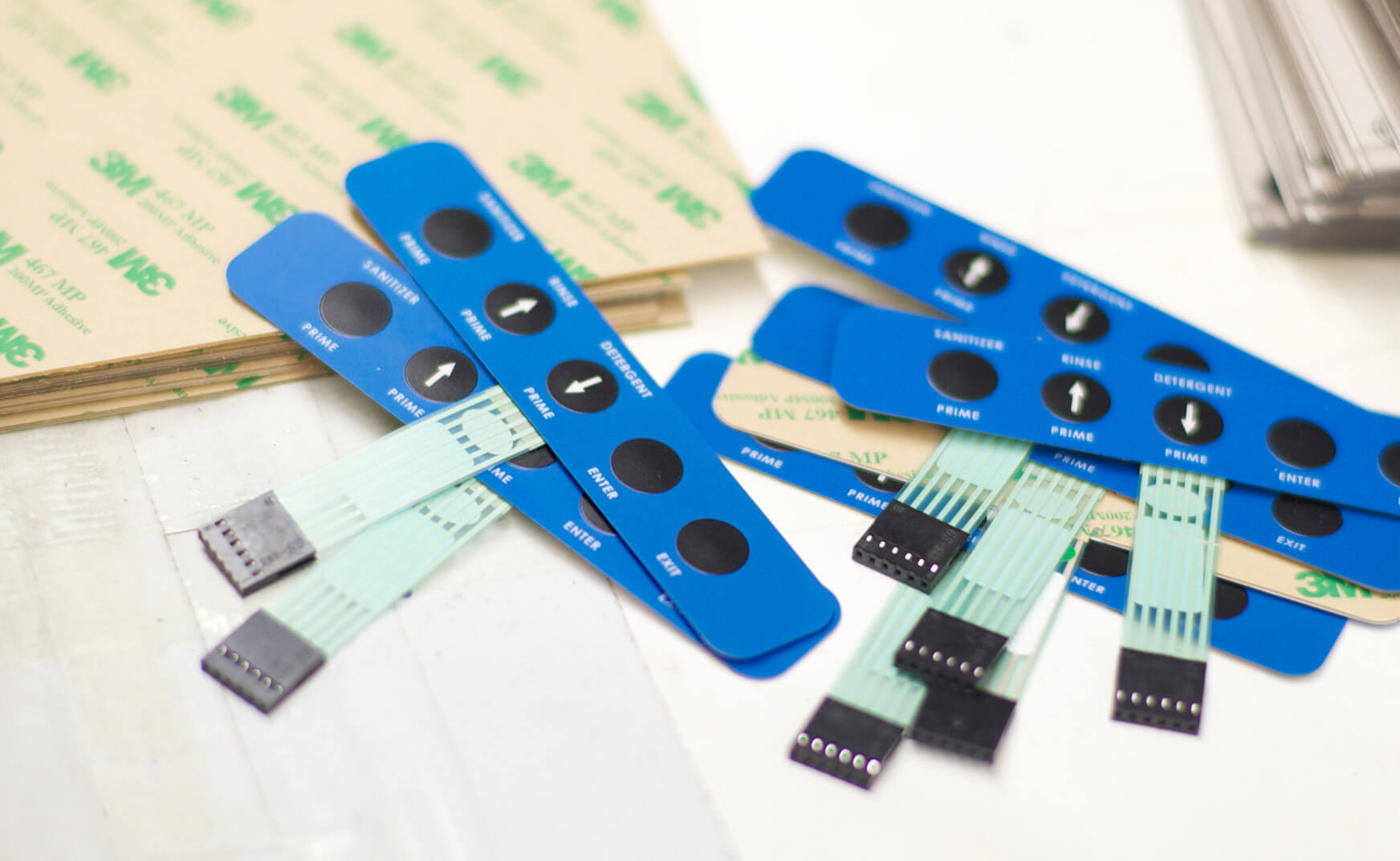Many designers prefer working with a proven membrane switch manufacturer for custom interfaces.
Many designers prefer working with a proven membrane switch manufacturer for custom interfaces.
Blog Article
All About Membrane Switch: Comprehending Its Design and Capability
When you believe about the control interfaces in contemporary gadgets, membrane layer buttons commonly come to mind. Allow's explore what sets membrane switches apart from other control systems.
What Are Membrane Switches?

Membrane layer switches can likewise be tailored pertaining to shape, dimension, and graphics, permitting manufacturers to develop unique interfaces tailored to details products. Overall, membrane layer switches play a significant role in enhancing customer experience across a vast variety of applications.
How Membrane Layer Changes Job
When you push a key on a membrane layer button, it turns on a simple yet effective mechanism. The leading layer, frequently made of adaptable material, pushes down onto a conductive layer under it. This action bridges the space between conductive traces, completing an electrical circuit. As quickly as the circuit closes, it sends out a signal to the tool's controller, which analyzes your input.
You'll notice that the responsive comments varies based on the switch design, supplying either a soft click or a more obvious action. Once you release the secret, the membrane layer returns to its initial placement, resuming the circuit and stopping the signal. This procedure occurs virtually immediately, making certain a receptive user experience.
Membrane buttons are prominent because of their durability and resistance to dust and dampness, making them ideal for numerous applications, from household devices to medical gadgets. Comprehending this operation assists you value their extensive use.
Secret Components of Membrane Layer Buttons
Understanding the crucial elements of membrane switches is fundamental for realizing their functionality and layout. At the core, you'll find the visuals overlay, which offers the aesthetic interface for individuals. Beneath that, there's a spacer layer that divides the circuit layers, making sure that they do not make contact until pushed. The circuit layer is where the magic happens; it is composed of conductive traces that finish the circuit when you press the switch. Another important aspect is the glue backing, permitting the button to comply with surface areas securely. The protective layer guards versus ecological factors and put on, expanding the switch's lifespan. Each element plays a substantial duty in guaranteeing trusted performance and individual interaction. By understanding these elements, you'll obtain insight into how membrane switches run and their significance in various applications.
Materials Made Use Of in Membrane Switch Over Style
The performance and sturdiness of membrane layer switches greatly rely on the products used in their layout. You typically encounter polyester and polycarbonate as key substratums because of their outstanding toughness and flexibility. These materials withstand scratches and chemicals, making them ideal for requiring environments.
The conductive layers frequently make use of silver or carbon, selected for their integrity and conductivity. membrane switch manufacturer. Silver offers superior efficiency, additional reading while carbon is an affordable option. For the overlay, you could consider a matte or shiny finish, depending upon your aesthetic needs and user experience
Make specific to pick adhesives that endure environmental factors like temperature level and humidity. Selecting the ideal products will certainly assure your membrane layer switch stands the examination of time.
Layout Considerations for Membrane Layer Switches
While designing membrane switches, it's essential to think read the article about various variables that affect their functionality and customer experience. Beginning by concentrating on the layout and switch size; make certain they're user-friendly and easy to browse. Think about the tactile responses you desire to offer-- will users need a recognizable click or a softer touch? Additionally, think of the materials you'll make use of, as they'll impact sturdiness and visual appeals.
Validate your style fits environmental factors, like dampness or temperature level variations, which can influence performance. By meticulously thinking about these elements, you'll develop a membrane layer switch that boosts use and satisfaction.
Applications of Membrane Layer Switches
Membrane layer switches are flexible elements discovered in various applications, from commercial tools to consumer electronics. You'll see their impact in makers that call for sturdy interfaces and in tools that take advantage of sleek designs. Understanding these applications aids you value the capability and practicality of membrane layer switches in everyday modern technology.
Industrial Tools Usage
When you're looking to improve the capability of industrial equipment, membrane buttons provide a trusted solution that integrates sturdiness with user-friendly layout. These switches are best for harsh settings, supplying resistance to dirt, dampness, and chemicals. Accept membrane buttons to enhance your operations and enhance general performance.
Customer Electronic Devices Assimilation
In the domain name of customer electronic devices, membrane buttons play a vital function in boosting individual interaction and tool capability. You'll discover them in gadgets like microwaves, push-button controls, and gaming consoles, giving a seamless way to interact with technology. Their streamlined style enables simple assimilation into numerous products, making controls instinctive and easy to use. With their capability to incorporate graphics and backlighting, you can take pleasure in a modern-day visual that complements the gadget's overall look. Membrane buttons likewise guarantee durability and resistance to dirt and wetness, expanding the lifespan of your electronic devices. By selecting membrane layer switches, you enhance not simply the functionality yet additionally the style of your devices, making day-to-day interactions smooth and enjoyable.
Benefits and Disadvantages of Membrane Layer Switches
While membrane switches click here for more info use a range of advantages, they additionally come with some drawbacks that you should take into consideration. One considerable advantage is their compact style, making them ideal for space-constrained applications.

Nevertheless, there are drawbacks. Membrane switches can have a shorter life expectancy compared to mechanical buttons, specifically under heavy usage. They can also be much less tactile, which could impact customer responses during procedure. Furthermore, if harmed, repairing them can be challenging and commonly calls for total substitute. Inevitably, their sensitivity to severe temperatures and environmental problems might limit their efficiency in specific setups. Stabilizing these benefits and drawbacks will certainly aid you identify if membrane layer buttons are the best fit for your task.
Often Asked Inquiries
For How Long Do Membrane Layer Switches Over Usually Last?
Membrane changes generally last in between 5 to one decade, depending upon use and environmental problems. You'll intend to review aspects like wear, exposure to moisture, and temperature variations to determine their long life effectively.
Can Membrane Layer Switches Be Personalized for Details Layouts?
Yes, you can tailor membrane switches to fit specific layouts (membrane switch manufacturer). You'll have the freedom to pick shades, shapes, and formats that match your task's demands, guaranteeing they blend perfectly with your general aesthetic
What Is the Expense Variety for Membrane Layer Change Manufacturing?
The expense variety for membrane layer button production normally falls in between $1 and $10 each, depending on elements like design intricacy, amount, and products. You can get quotes from manufacturers to locate the finest alternative.

Are Membrane Layer Switches Water-proof or Immune?
Membrane layer switches can be developed to be waterproof or immune, depending on materials utilized and construction approaches. If you need them for damp settings, assure you define those requirements throughout the design procedure.
How Do Membrane Switches Compare to Traditional Switches?
Membrane layer buttons are normally thinner and more adaptable than typical switches, supplying a streamlined style. They're often less complicated to clean and incorporate, but may not provide the tactile comments you're made use of to with mechanical alternatives.
Verdict

Report this page